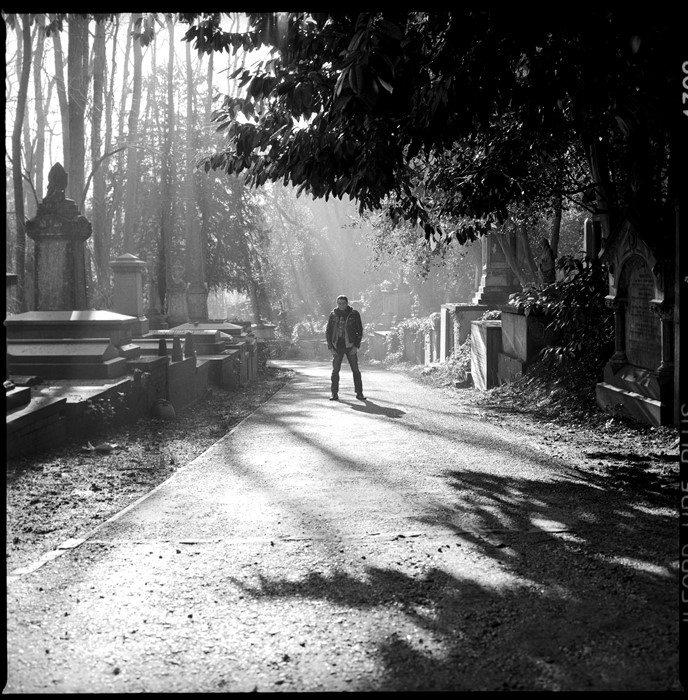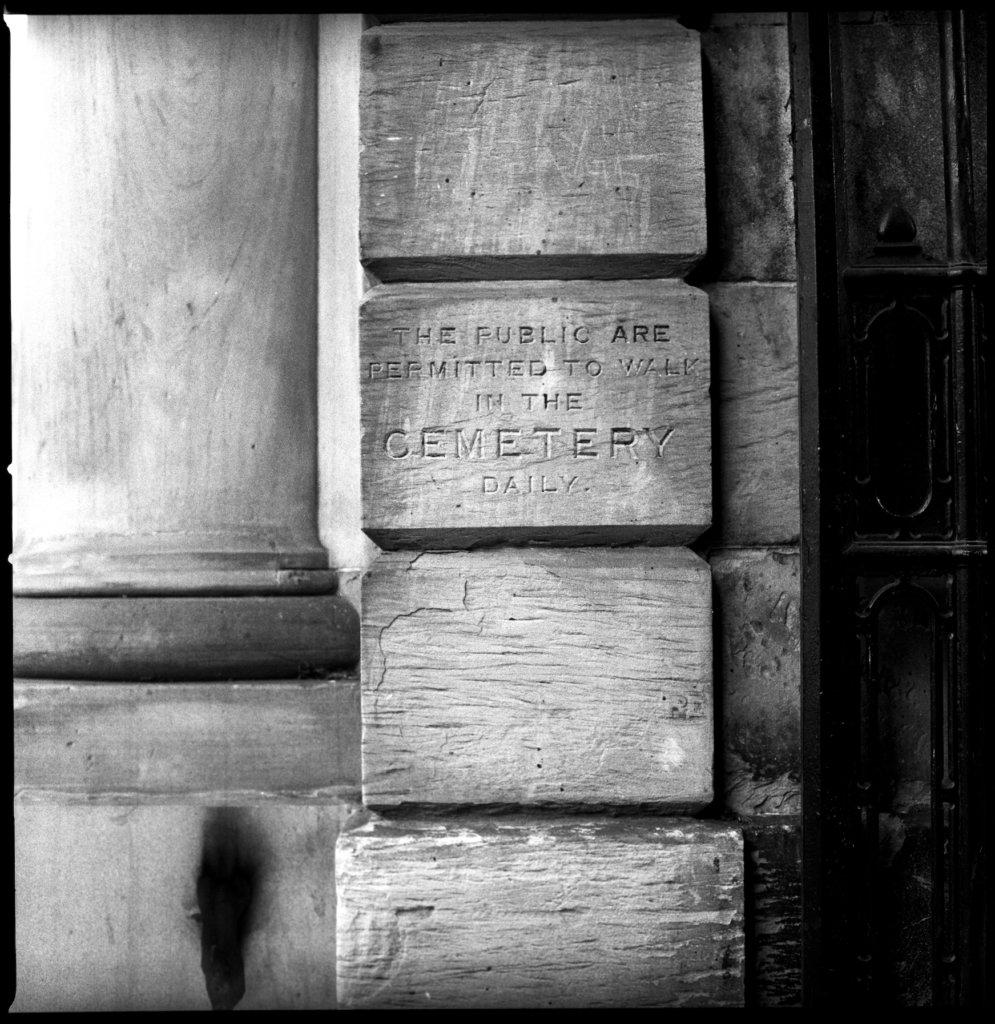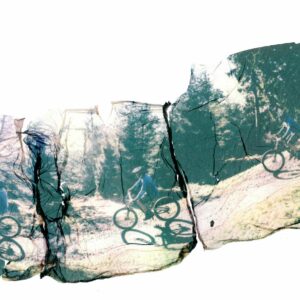
Critical Visual Analysis: Exploring Jess Kohl’s ‘Friends of the Dead’ in the Context of Roland Barthes’ Camera Lucida Art Theory
Jess Kohl explores the lives of individuals who work and volunteer at the Magnificent Seven cemeteries in London in her photographic project called ‘Friends of the Dead.’ These portraits meditate on life, death, and the spaces in between. When viewed through the lens of Roland Barthes’ art theory Camera Lucida and Heidegger’s Being and Time: Temporality, the project becomes particularly interesting.
In ‘Friends of the Dead,’ Kohl offers a poignant reflection on the role of cemeteries in our lives. Through her photographs, she invites us to explore the often-overlooked significance of these final resting places. While many might find the idea of spending time in a cemetery morbid, Kohl sees them as a source of peace and tranquillity. She finds solace in the quiet and contemplative atmosphere of these sacred spaces, escaping the hustle and bustle of the city (O’Brien and Kohl, 2016).
In my own experience, I have also discovered that cemeteries can offer a sense of calm and reflection. When I stumbled upon the graveyard that I chose to photograph for this project, I was struck by the stillness and serenity of the space. Kohl’s portraits capture this sense of intimacy and quiet contemplation, reminding us of the importance of taking time to reflect on our mortality.
Kohl’s work prompts us to consider how cemeteries can offer a unique perspective on life and death. These final resting places can serve as a powerful reminder of the fragility and beauty of life by encouraging us to contemplate our mortality.

Barthes argues that photography is characterised by “fatality” and “that rather terrible thing which is there in every photography: the return of the dead.” He suggests that photography captures and contains traces of the past only if those traces remain active in the present, functioning as a sort of vital force (Barthes, 1993). This is precisely what Kohl’s portraits achieve. They capture the individuals who work and volunteer at the cemeteries, immortalising them in a moment of stillness, as is evident in Figure one.
The image depicts a man standing still on a path in the distance, framed by a leaning, lush tree in the foreground and bare trees to the left of the subject in the background. The beams of light shining through the greenery and the pathway with graves on either side create leading lines toward the man, further highlighting the subject. This emphasises the continuity between life and death by combining the symbolism of life through nature and the live subject with the symbolism of death through the graves.
In my ongoing project, I aim to delve deeper into the themes of stillness and tranquillity in graveyards. The quiet nature of these places has always been an inspiration for me. To emphasise these themes, I plan to use captured light beams shining through the woodlands. I believe that this technique will allow me to showcase the beauty of these spaces uniquely, while also drawing attention to their serene atmosphere.
As opposed to focusing solely on portraits of visitors, as Kohl has done in her images, I will explore the theme of death through the sculptural and textural aspects of graves and overgrown greenery, pushing beyond what she accomplished in Figure two. This will give me a chance to highlight the intricate details of these structures, many of which are often overlooked. I believe that by doing so, I will be able to provide a new perspective on the theme of death, one that is both thought-provoking and aesthetically pleasing.

Heidegger’s Being and Time posits that temporality is relevant to understanding the project at hand. He argues that time is not simply reducible to the vulgar experience of time, nor does it originate in distinction from eternity. Time should be grasped in and of itself as the unity of the three dimensions – what Heidegger calls “ecstases” – of future, past, and present (Heidegger and Schmidt, 2010). Kohl’s portraits capture the stillness of the present moment while also invoking the past and the inevitability of death. They serve as a reminder that death is an essential part of life and that cemeteries are not just places of mourning, but also places of contemplation and reflection.
Contrary to the popular notion that graveyards represent a sombre and melancholic place, my images aim to capture a more nuanced aspect of how graveyards exemplify ‘ecstases.’
One way I aim to accomplish this is by focusing on the intricate and complex root systems of trees that often grow in graveyards. These trees are a testament to the resilience of life and how it can thrive even in the most unconventional of places. By depicting these roots, I will showcase how resource sharing occurs not only among the living but also between the living and the dead (SITNFlash, 2019). Another way I will capture this aspect is by depicting or creating in the form of symbolism how cadavers in the ground provide “nutrients, especially nitrogen” (Simon, 2020) to help the development of nearby plants. While this may seem morbid to some, it serves as a symbolic representation of how the past supports the present and the development of the future.
By exploring these themes, I hope to challenge the conventional notions surrounding graveyards and provide a new perspective on how they can be seen as a symbol of life and growth rather than just death and decay.
In conclusion, Jess Kohl’s ‘Friends of the Dead’ is a powerful photographic project that invites us to consider the role of cemeteries in our lives. Viewing the photographs through Roland Barthes’ art theory Camera Lucida and Heidegger’s Being and Time: Temporality enhances their poignancy and offers a meditation on life, death, and the spaces in between. Kohl’s work reminds us that death is an essential part of life, and cemeteries are not only places of mourning but also of contemplation and reflection.
References:
Barthes, R. (1993) Camera Lucida: Reflections on Photography. New Ed edition. Translated by R. Howard. London: Vintage Classics.
Critchley, S. (2009) ‘Heidegger’s Being and Time, part 8: Temporality’, The Guardian, 27 July. Available at: https://www.theguardian.com/commentisfree/belief/2009/jul/27/heidegger-being-time-philosophy (Accessed: 28 June 2023).
Heidegger, M. and Schmidt, D.J. (2010) Being and Time: A Revised Edition of the Stambaugh Translation. Revised edition. Translated by J. Stambaugh. Albany: State University of New York Press.
Kohl, J. (no date) Friends of the Dead, Jess Kohl. Available at: http://jesskohl.com/still/friends-of-the-dead/ (Accessed: 28 June 2023).
Morrison, B. et al. (2013) The power of photography: time, mortality and memory, the Guardian. Available at: http://www.theguardian.com/artanddesign/interactive/2013/may/19/power-photography-time-mortality-memory (Accessed: 28 June 2023).
O’Brien, A. and Kohl, J. (2016) Eerie Photographs of People Working in London’s Cemeteries, AnOther. Available at: https://www.anothermag.com/art-photography/9228/eerie-photographs-of-people-working-in-londons-cemeteries (Accessed: 28 June 2023).
PARRINO, E. (2022) Lomography – In Depth: The Meaning Of Time In Photography. Available at: https://www.lomography.com/magazine/349510-in-depth-the-meaning-of-time-in-photography (Accessed: 28 June 2023).
Popova, M. (2016) ‘Susan Sontag on How Photography Mediates Our Relationship with Life and Death’, The Marginalian, 22 July. Available at: https://www.themarginalian.org/2016/07/22/susan-sontag-peter-hujar-portraits-in-life-and-death/ (Accessed: 28 June 2023).
Simon, M. (2020) ‘Could a Tree Help Find a Decaying Corpse Nearby?’, Wired, 3 September. Available at: https://www.wired.com/story/could-a-tree-signal-if-a-corpse-is-decaying/ (Accessed: 28 June 2023).
SITNFlash (2019) ‘Exploring The Underground Network of Trees – The Nervous System of the Forest’, Science in the News, 6 May. Available at: https://sitn.hms.harvard.edu/flash/2019/exploring-the-underground-network-of-trees-the-nervous-system-of-the-forest/ (Accessed: 28 June 2023).
Sontag, S. (1979) On Photography. 1st Penguin Edition. London: Penguin.
Willette, J. (no date) ‘Roland Barthes: Camera Lucida | Art History Unstuffed’. Available at: https://arthistoryunstuffed.com/roland-barthes-camera-lucida/ (Accessed: 28 June 2023).






Leave a comment